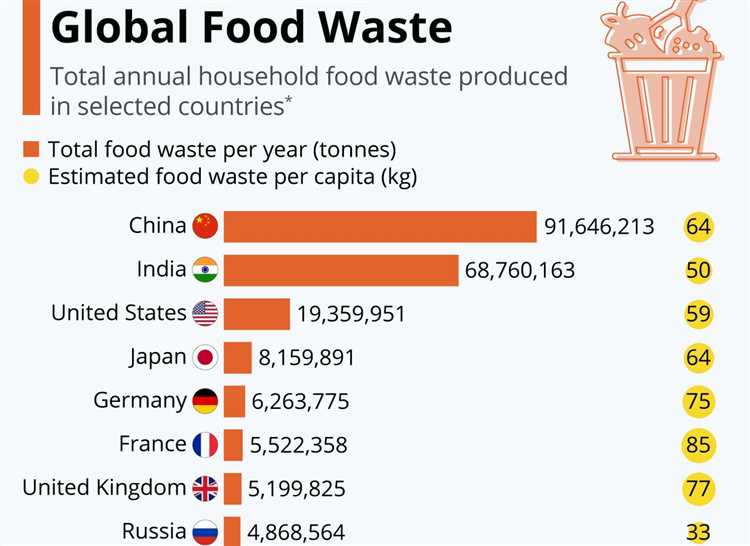
Food waste is a growing global problem, with millions of tons of food being wasted each year. It is not only an economic and environmental issue, but it also has serious social implications. One country that stands out when it comes to food waste rates is the United States. Despite being one of the wealthiest countries in the world, the United States has one of the highest food waste rates globally.
In the United States, it is estimated that about 40% of the food produced goes to waste. This staggering figure amounts to around $218 billion worth of food each year. This waste occurs at various stages of the food supply chain, from production and distribution to consumption. Restaurants, grocery stores, and households all contribute to this high food waste rate.
One of the primary reasons behind the high food waste rates in the United States is the culture of abundance. In a society where food is easily accessible and inexpensive, people tend to buy more than they need and dispose of excess food without much thought. The “throw-away” mentality is also prevalent, with many people discarding perfectly good food because of cosmetic imperfections or expiration dates.
The lack of awareness and education about the consequences of food waste also contributes to the problem. Many people are not fully aware of the environmental impact of wasted food, such as the greenhouse gas emissions produced during decomposition. Additionally, there is a lack of knowledge about proper food storage, meal planning, and preservation techniques, leading to unnecessary waste.
- The Alarming Issue of Food Waste in (Country Name)
- The Scale of the Problem
- Implications and Consequences
- Understanding Food Waste Rates
- 1. Consumer Behavior
- 2. Infrastructure and Supply Chain
- 3. Food Industry Practices
- 4. Policy and Legislation
- 5. Socioeconomic Factors
- The Impact of Food Waste on the Environment
- Efforts to Reduce Food Waste
- Educating the Public
- Legislation and Regulations
- Government Initiatives and Policies
- The Role of Individuals in Combating Food Waste
- 1. Mindful Shopping and Meal Planning
- 2. Proper Food Storage and Preservation
- Q&A
- Which country has the highest food waste rates?
- Why does Canada have the highest food waste rates?
- What are the consequences of high food waste rates?
- What measures are being taken to reduce food waste in Canada?
The Alarming Issue of Food Waste in (Country Name)
Food waste has become a significant problem in (Country Name), resulting in severe implications for the environment, economy, and food security. The extent of food waste in (Country Name) is truly alarming, warranting immediate attention and action.
The Scale of the Problem
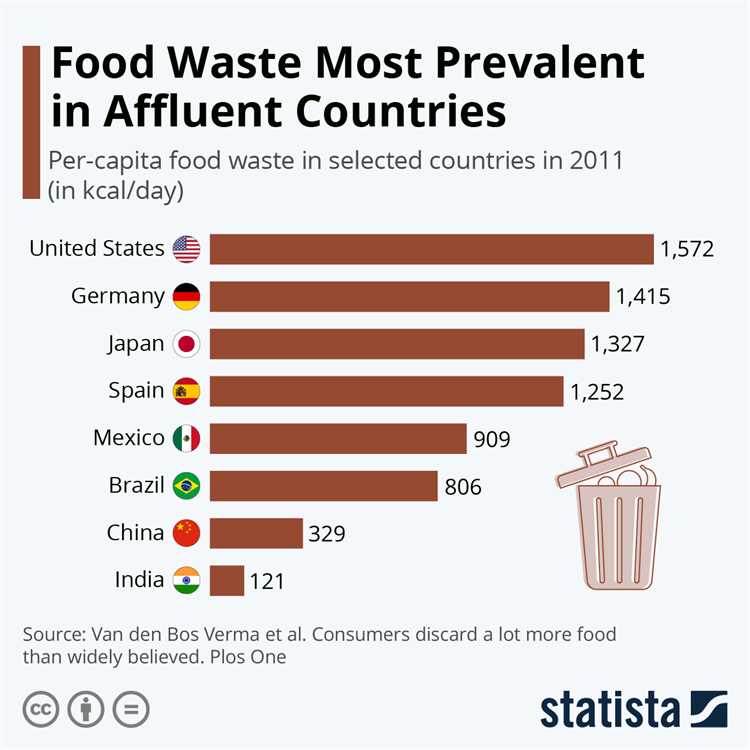
(Country Name) ranks among the countries with the highest rates of food waste globally. According to recent statistics, an estimated X% of all food produced in the country goes to waste. This amounts to approximately Y million tons of food wasted each year.
Moreover, food waste spans across the entire food supply chain, from production and processing to distribution and consumption. This wastage occurs due to a combination of factors, including inadequate storage and transportation facilities, inefficient distribution systems, and consumer behaviors.
Implications and Consequences
The consequences of food waste in (Country Name) are manifold and concerning. Firstly, it exacerbates environmental issues such as greenhouse gas emissions and land usage. The resources expended in the production and disposal of wasted food contribute significantly to carbon emissions and land depletion, further straining the already fragile ecosystems.
Secondly, food waste poses economic challenges to (Country Name). The wasted food represents a loss of production costs, labor, and investment. It also leads to increased food prices as the cost of producing wasted food is absorbed within the overall food market.
Lastly, the issue of food waste directly correlates with food security concerns. While (Country Name) faces the problem of food waste, a considerable portion of its population still suffers from hunger and malnutrition. Mitigating food waste could help address these social issues by redirecting the surplus food to those in need and reducing the strain on the existing resources.
| Sector | Percentage of Food Waste |
|---|---|
| Food Production | X% |
| Processing and Manufacturing | Y% |
| Retail and Distribution | Z% |
| Household and Consumer | W% |
The table above provides a breakdown of food waste in (Country Name) by sector. It serves to highlight the areas where interventions and improvements can be made to effectively tackle the issue.
Addressing the alarming issue of food waste requires collaborative efforts from various stakeholders, including government authorities, food producers, manufacturers, retailers, consumers, and non-governmental organizations. Implementing strict policies, improving infrastructure, raising awareness, and promoting responsible consumption practices are crucial steps towards curbing food waste in (Country Name) and building a sustainable food system for the future.
Understanding Food Waste Rates
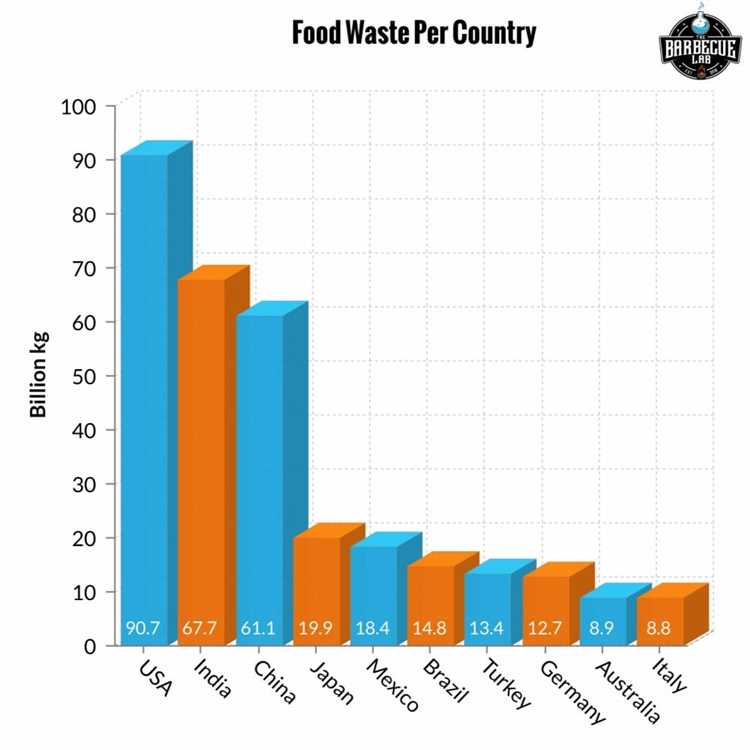
Food waste rates can vary significantly from country to country and are influenced by a variety of factors. Understanding these rates is crucial for developing effective strategies to reduce food waste. Here are a few key factors that contribute to food waste rates:
1. Consumer Behavior
Consumer behavior plays a significant role in food waste rates. Factors such as over-purchasing, improper storage, and lack of meal planning can lead to higher levels of food waste. Educating consumers about the importance of reducing food waste and providing them with practical tips for minimizing waste can help decrease these rates.
2. Infrastructure and Supply Chain
The infrastructure and supply chain of a country also impact food waste rates. Inadequate cold storage facilities, transportation inefficiencies, and improper distribution networks can all contribute to higher levels of food waste. Developing and improving infrastructure and supply chain management can help reduce these waste rates.
3. Food Industry Practices
The practices of the food industry, including manufacturers, retailers, and restaurants, can significantly influence food waste rates. Overproduction, strict cosmetic standards, and inadequate inventory management can all contribute to higher levels of waste. Implementing better production and distribution practices can help lower these rates.
4. Policy and Legislation
Government policies and legislation can have a significant impact on food waste rates. Lack of regulations, inadequate monitoring, and the absence of incentives for waste reduction can all contribute to higher waste rates. Implementing policies that promote food waste reduction, such as tax incentives or penalties for excessive waste, can help address this issue.
5. Socioeconomic Factors
Socioeconomic factors, such as income levels and food affordability, can also influence food waste rates. In countries with higher income levels, consumers may be more likely to discard food due to a lack of perceived value. Addressing these socioeconomic factors, such as improving access to affordable food and promoting food literacy, can help reduce food waste.
By understanding the factors that contribute to food waste rates, countries can develop targeted strategies to address this issue effectively. Collaboration between consumers, industry stakeholders, and policymakers is crucial for implementing sustainable solutions and reducing food waste on a global scale.
The Impact of Food Waste on the Environment
Food waste is not only a social and economic issue but also has a significant impact on the environment. The excessive amount of food that is wasted each year contributes to various environmental issues.
Firstly, food waste leads to the unnecessary consumption of natural resources. Producing food requires valuable resources such as water, land, and energy. When food is wasted, these resources are essentially being wasted as well. This puts unnecessary strain on the environment and depletes these finite resources.
Secondly, food waste contributes to greenhouse gas emissions. When food ends up in landfills, it decomposes and releases methane gas. Methane is a potent greenhouse gas that is even more harmful than carbon dioxide. The release of methane contributes to global warming and climate change, exacerbating the environmental crisis.
Furthermore, the disposal of food waste leads to further environmental degradation. Transporting and dumping food waste requires energy and contributes to pollution. Landfills take up valuable space and can contaminate soil and water sources. This can have a detrimental impact on ecosystems and biodiversity.
Another important aspect to consider is the ethical dimension of food waste in relation to hunger and food insecurity. While a significant amount of food is being wasted, millions of people around the world are suffering from hunger. Addressing the issue of food waste can help alleviate hunger and ensure the efficient use of resources.
In conclusion, food waste has a profound impact on the environment. It contributes to the depletion of natural resources, greenhouse gas emissions, pollution, and further environmental degradation. By reducing food waste, we can address these environmental issues and work towards a more sustainable future.
Efforts to Reduce Food Waste
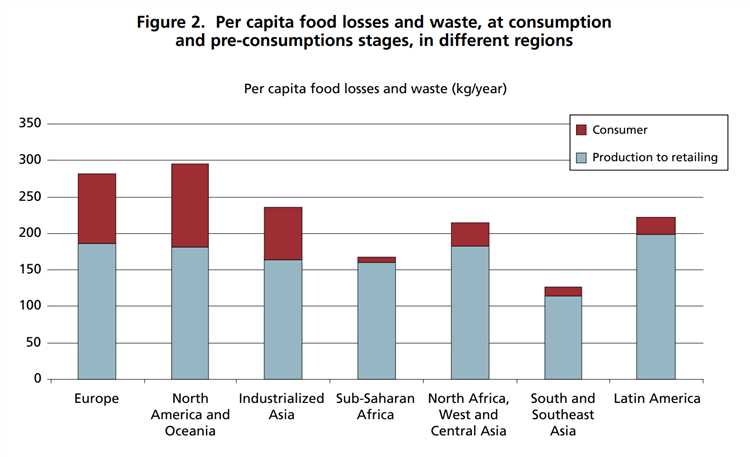
Several countries around the world have recognized the severity of food waste and have implemented various initiatives to reduce it. One country that stands out for its efforts is Spain.
Educating the Public
In Spain, there has been a push to educate the public about the issue of food waste and its impact on the environment. Schools and educational institutions have implemented programs to teach students about the importance of reducing food waste and the various ways it can be done.
Legislation and Regulations
The Spanish government has also enacted legislation and regulations to combat food waste. One such regulation requires supermarkets to donate any unsold but edible food to food banks and other charitable organizations.
In addition, the government has implemented tax incentives for businesses that reduce food waste and penalties for those that do not comply with the regulations. These incentives and penalties serve as a strong incentive for businesses to take action and reduce their food waste.
Furthermore, the Spanish government has set a goal to reduce food waste by 50% by the year 2030. This goal provides a clear target and demonstrates the government’s commitment to addressing the issue.
Overall, Spain’s efforts to reduce food waste serve as a model for other countries facing similar challenges. By educating the public, implementing legislation and regulations, and setting clear goals, Spain has made significant progress in tackling this issue and setting a positive example for others to follow.
Government Initiatives and Policies
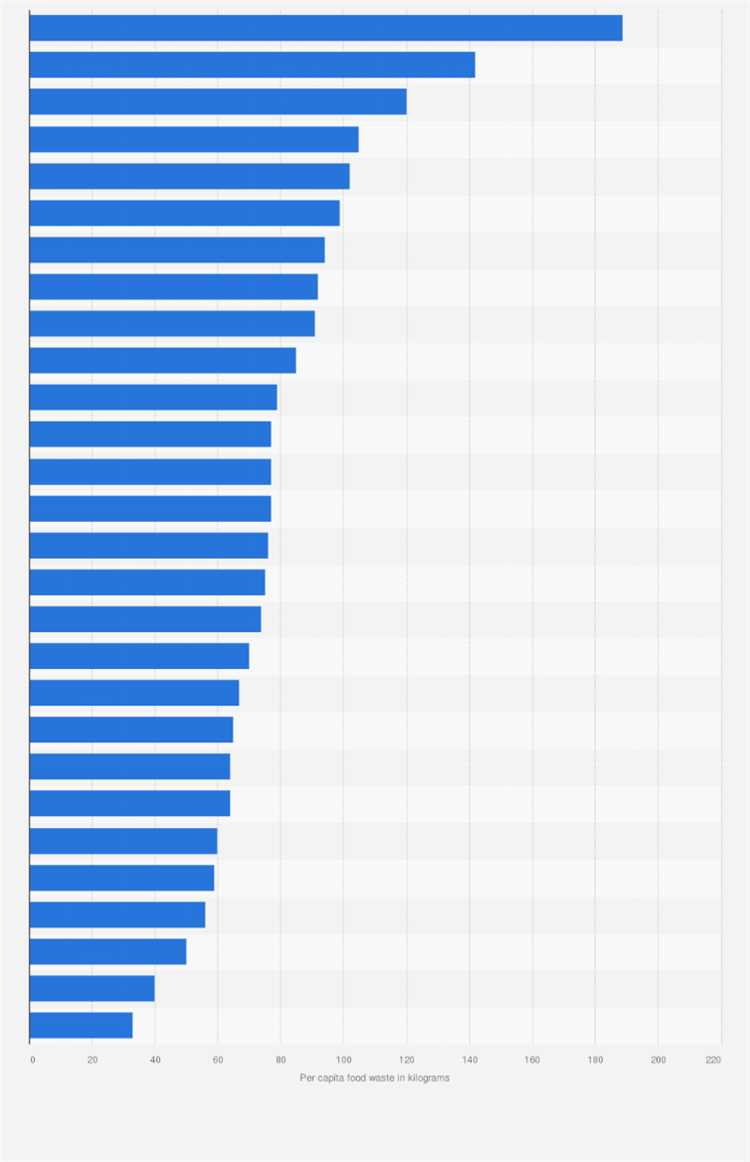
The government of the country with the highest food waste rates has taken several initiatives and implemented policies to tackle this pressing issue. These initiatives and policies aim to create awareness, promote mindful consumption, and reduce food waste throughout the country.
One of the main initiatives is the establishment of a national food waste reduction campaign. This campaign aims to educate the public about the consequences of food waste and provide them with practical tips and knowledge on how to reduce waste in their daily lives. The campaign includes advertising campaigns, informative videos, and workshops that are conducted in schools, community centers, and other public spaces.
Another important policy is the implementation of strict regulations for businesses and food establishments. These regulations require businesses to measure and report their food waste regularly. By holding businesses accountable for their waste, the government aims to encourage them to adopt sustainable practices and implement measures to reduce food waste.
The government has also introduced tax incentives for businesses that actively work towards reducing their food waste. These incentives encourage businesses to invest in technologies and practices that can help them reduce waste, such as composting, food donation, and better inventory management systems.
Furthermore, the government has collaborated with NGOs and non-profit organizations to establish food recovery networks. These networks facilitate the collection and redistribution of excess food from businesses and individuals to those in need. By streamlining the process of food donation, these networks help minimize food waste and address food insecurity issues simultaneously.
In addition to these initiatives, the government has also invested in research and development to find innovative solutions for reducing food waste. This includes supporting projects and startups that focus on developing technologies to extend the shelf life of perishable foods, improving storage facilities, and implementing efficient supply chain management systems.
In conclusion, the government of the country with the highest food waste rates has committed to addressing this issue through various initiatives and policies. By raising awareness and implementing regulations, incentives, and collaborations, the government aims to reduce food waste and create a more sustainable and efficient food system.
The Role of Individuals in Combating Food Waste
Reducing food waste is not solely the responsibility of governments and businesses. Individuals play a crucial role in combating food waste and ensuring a more sustainable future.
1. Mindful Shopping and Meal Planning
One of the most effective ways individuals can contribute to reducing food waste is through mindful shopping and meal planning. By planning meals in advance and creating a shopping list, individuals can avoid purchasing excessive amounts of food that may go to waste. Additionally, individuals can opt for imperfect or “ugly” produce, which often gets discarded due to cosmetic reasons, but is still perfectly edible.
2. Proper Food Storage and Preservation
Another way individuals can combat food waste is by storing and preserving food properly. This includes storing perishable items such as fruits, vegetables, and leftovers in the refrigerator to extend their shelf life. Freezing food when it is about to expire or using preservation techniques such as canning or pickling can also help prevent food waste.
Individuals can also make use of leftovers by incorporating them into new meals or donating excess food to local food banks or charities. This not only prevents food waste but also helps those in need.
By taking these small steps, individuals can contribute to reducing food waste and promoting a more sustainable food system for future generations.
Q&A
Which country has the highest food waste rates?
The country with the highest food waste rates is Canada.
Why does Canada have the highest food waste rates?
There are several factors contributing to Canada’s high food waste rates, including high consumerism, frequent sales and promotions that lead to over-purchasing, lack of awareness about the consequences of food waste, and inadequate infrastructure for food redistribution.
What are the consequences of high food waste rates?
The consequences of high food waste rates include negative environmental impact, wasted resources such as water and energy used in food production, increased greenhouse gas emissions, economic losses for both consumers and food producers, and missed opportunities to feed the hungry.
What measures are being taken to reduce food waste in Canada?
Various measures are being implemented to reduce food waste in Canada, such as awareness campaigns to educate consumers about the issue, collaborations between food retailers and organizations that aim to salvage and redistribute surplus food, introduction of policies and regulations to encourage food donation and composting, and initiatives to encourage consumers to plan meals and shop more efficiently.